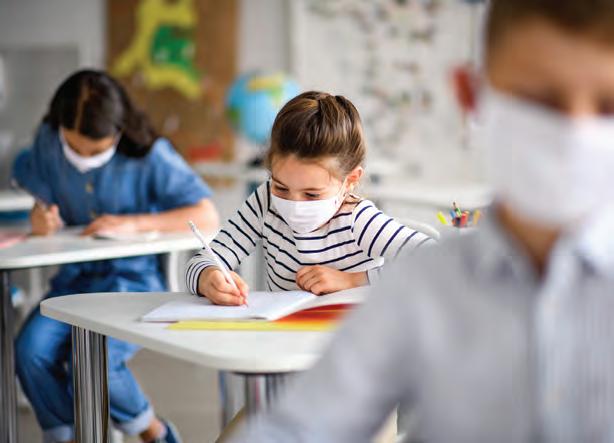
3 minute read
Into The Unknown
from PediMag Summer 20
Back To School 2020
Into The Unknown
By Dr. Bethany Ziss : Developmental Pediatrics, AHN Pediatrics Bloomfield
In my work as a developmental pediatrician, I have conversations with families every day about challenges relating to school. Many now are wondering how best to prepare children to return to school in the fall, after the abrupt change to remote learning in March. Districts are still working out what school will look like in the fall, and plans made now may change very quickly later. So instead, we are preparing children for uncertainty.
School at home was tough for many, but resuming school in a building brings additional challenges. When we talk about going back to school, children may picture school the way it was in the past. The difference between school before COVID-19 and after COVID-19 may actually be harder for some children because they will be in the same place, with the same people, doing many things differently.
As always, children do best when they know what to expect, even if they may have to expect changes. It may help to tell children before the year starts that we are making a “for now” plan. If more people get sick nearby, the plan may change. We are all changing plans together.
Younger children: If children will be attending school in person some days and by remote other days, make a calendar. Use pictures and color-coding younger children.
What will school be like? > Students will be wearing masks except for when they are ea ting. > Ever yone may have a temperature checked every day. > Desks will be kept further a part and facing forward rather than in groups. > Children will not be sharing supplies as much. > Classma tes will greet each other with waves rather than hugs or high-fives. > Y ou might want to look together at pictures from areas that have started socially distanced classrooms.
The wonderful Daniel Tiger’s Neighborhood has an episode where Jodi moves to the neighborhood and joins school. Unlike Daniel’s own “first day at school” episode, Jodi has been to school before. At first, she notices all the things that are different. Her teacher and family help her look for things that are the same. “Daniel’s Very Different Day” also addresses plans changing at home and school. Older children and teens: As with younger children, prepare students for the changes that we know are expected. Teens may want to read some articles about the different ways school districts are preparing.
Expect to field questions about why classmates may be going to events that they are not permitted to attend. You may hear the word “unfair” a lot – this is to be expected. The conversation that “different families have different rules” applies here, just as it does around bedtimes, electronics use and allowances.
Touch is often an important part of social relationships for tweens and teens. It may be hard to see friends for the first time in months while having to keep a distance.
Older students often have increased expectations for independent work and time management. This may be a good time to experiment with systems to keep track of assignments. Try a paper journal or datebook. Kids and teens who have a phone or tablet might try a free organization app (with adult oversight).
Teens may be missing out on independence milestones – driving, working, dating. Be creative and collaborative in finding ways to balance your teen’s growing need for independence with your expectations for safety and social distancing.
If students are attending school in person some days and doing independent work by remote other days, try to keep a somewhat










